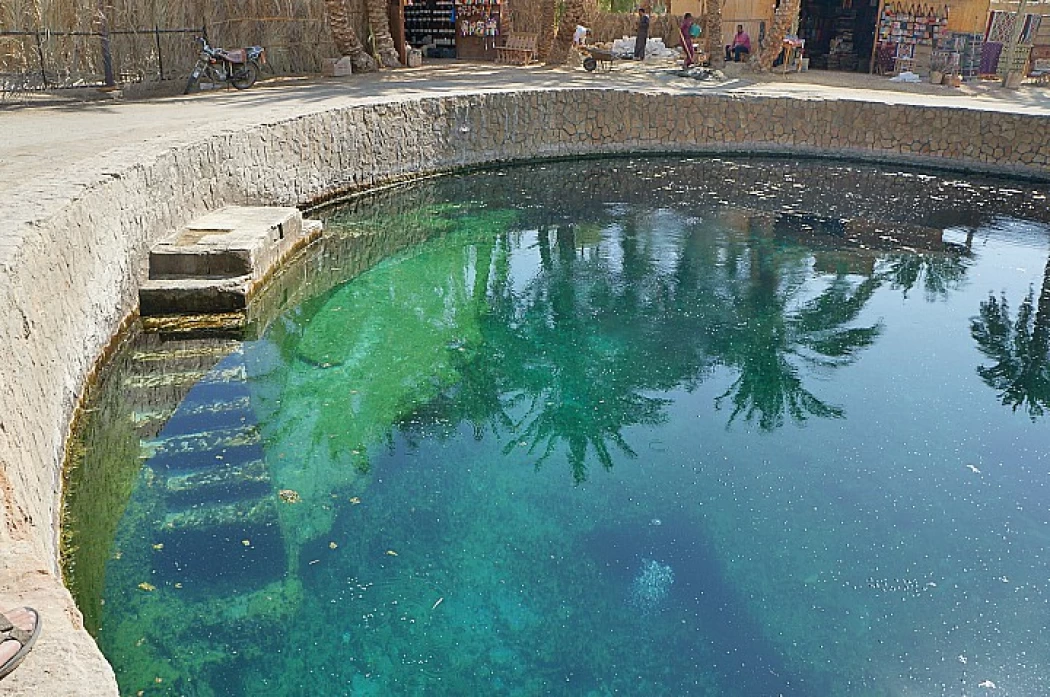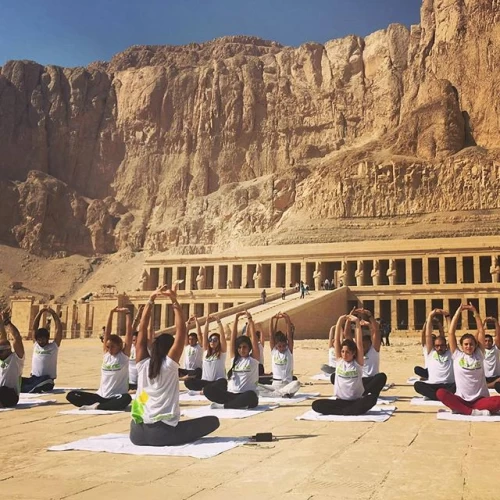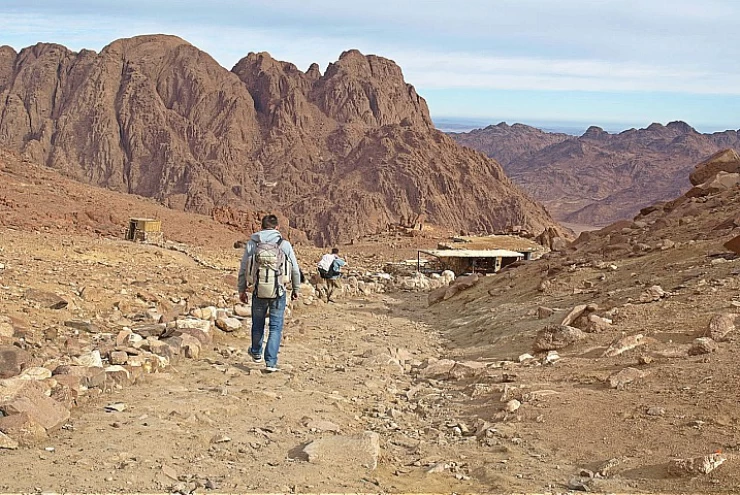
Egypt's Bahariya and Farafra Oases: Two of the Country's Most Enchanting Natural Wonders
The Farafra and Bahariya Oases encompass some of Egypt's rarest natural terrain, making one forget for a moment that the Giza pyramids are the country's most recognizable and attractive landmark, writes Juan Martinez. Egypt Travel Packages often include these oases for travelers looking to explore Egypt's hidden natural wonders.
A different face of the desert
Although the Farafra and Bahariya Oases, located in Egypt's Western Desert, do not cover even one percent of the desert area, they contain some of the rarest natural terrain and geological formations in the country. Although these two oases are not a spot where archaeologists go to find ancient tombs or hidden treasures, they are home to fossils of dinosaurs and other creatures that have not been seen by humans for millions of years. Egypt Shore Excursions often feature visits to these remote, natural wonders, providing tourists with a unique desert experience.
Life in an arid climate
About 370 kilometers southwest of the Egyptian capital Cairo, the Bahariya Oasis is a vibrant spot in the heart of one of the harshest regions on earth. Like most oases in the Western Desert, this oasis was formed when the ground level dropped to a level where groundwater and natural spring water emerged.
The hot springs are one of the main attractions in this lush, verdant area, which is dotted with palm and fruit trees. Many residents and visitors believe that there are therapeutic properties inherent in the water flowing from these springs, which smells of sulfur and has a temperature of more than 40 degrees Celsius. They also believe that enjoying these waters is the perfect end to a long, hard day. Egypt Day Tours often include a visit to Bahariya’s hot springs for relaxation and wellness.
Signs of a volcanic past
As I continued south from the Bahariya Oasis, I found myself surrounded by hundreds of hills covered in black ash. This marked my arrival in the Black Desert, one of the strangest desert terrains in the entire world. To get a better view of the place, I climbed its highest point, known as English Mountain. This is a spot from which one can admire and marvel at the unique world that exists there.
Once I reached the top of the “mountain,” my clothes were covered in powder from the black sandstone there, an indication of volcanic activity in the area during the Jurassic period. Visitors on Egypt Tours packages from USA can take guided tours to explore this fascinating terrain.
Limestone boulders on the flat ground
The terrain between the Farafra and Bahariya Oases is changing rapidly. Just 30 kilometers to the west, you can no longer see the hills of the “Black Desert,” and the dominant image is of flat, monochromatic land.
In this atmosphere, it feels for a moment as if the movement of nature has come to a standstill and all life has disappeared. However, the golden-colored limestone boulders that have appeared in this area as a result of soil erosion millions of years ago are home to endangered wildlife such as desert foxes known as white foxes, as well as Egyptian rams and gazelles.
Shaped by the forces of nature
Some 126 kilometers southwest of the Black Desert lies the White Desert, arguably the most unusual terrain in the entire Western Desert region. Filled with white limestone formations shaped either like mushrooms or sea waves, this vast expanse is a wonder of nature that amazes even the most experienced travelers.
These chalk-like rocky outcrops were created by a tectonic uplift that followed an ice age on Earth about 30 million years ago. Countless sandstorms since then have shaped the outcrops into their current form, making the White Desert a must-see for tourists booking Egypt Travel Packages.
Egypt is known for its cities, mineral and sulfur water, dry, moisture-free weather, and soil of sand and silt, which is proper for treating numerous diseases, especially skin diseases and any disease marked by inflammation and pain in the joints, muscles, or fibrous tissue, especially rheumatoid arthritis. Due to its distinctive natural properties, Egypt has a multiplicity of beaches and seas. Many sulfur and mineral eyes are spread in Egypt.
Famed for its deserts and ancient wonders, have you heard about Egypt's natural water springs that induce relaxation and healing and wow with fabulous views? If you're interested in complete seclusion, soaking in warm mineral water, and an adventure in the desert, here are some of the best natural water springs in Egypt that are worth a visit.
This natural water also contains several mineral salts and some minerals of therapeutic value such as sodium carbonate and varying proportions of some metal elements. It is like magnesium and iron, and it is distinguished by its depth, amplitude, and temperature which ranges between 30 and 70 degrees Celsius.
Laboratory analyses have shown the proportion of salinity in these natural water resources for hospitalization, in addition to the availability of silt in the bottoms of these sulfur-water springs with its therapeutic properties that cure many bone diseases, diseases of the digestive system, respiratory system, skin diseases, etc. It has also been proven that it is very beneficial in the case of treating arthritis patients by burial in the sand. It has passed through and produced economically in recent years, within the framework of strict scientific control on quality and standard specifications.
The number of natural eyes in Egypt is 1450 eyes, fountains, and wells that spread throughout Egypt east and west, some of which are found in the Western Desert by entering oases and marine oases, including what is found in Cairo like the Helwan eyes group and Ain Sirah, some of which are in the Eastern Desert, some of which are in Sinai such as Pharaoh's spring and Moses water spring are among the features of medical tourism in Egypt.
Many natural water springs spread throughout Egypt, the most important of which is Siwa Oasis, which lies to the west of Marsa Matrouh by about 300 km. It occupies the forefront position among the optimal places for medical tourism and natural hospitalization in Egypt and is characterized by charming poetic calm, air purity, the purity of the sky, and mild temperature, which can be visited with Cairo Top Tours by booking Egypt day tours.
About 180 kilometers from Hammam Musa, there is a mountain cave in the city of Abu Zenima from which extremely hot sulfur springs erupt, with temperatures ranging between 55 and 75 degrees Celsius, reaching the boiling point.
The sulfur springs in Abu Zenima are known as «Pharaoh's Bath» and their hot water flows into the sea without benefiting from it. However, some tourism companies obtained approvals to exploit the area and transform it into a tourist and therapeutic resort, and began constructing concrete structures, but they were not completed.
Musa Baths are characterized by a temperature of 37 degrees throughout the year and their water is rich in sodium and magnesium. It is located in South Sinai, one of the most famous medical tourism places in the governorate.
Hammam Musa is located 5 kilometers from Tur Sinai –the capital of the governorate - surrounded by many palm trees, and has sulfurous waters with multiple mineral elements.
It is noteworthy that the sodium found in the water of Hammam Musa helps speed up wound healing, while magnesium helps the color cells in the skin regain their vitality, to restore the natural color of the skin, and has a strong effect on treating various skin diseases such as vitiligo, psoriasis, and skin tags.
















